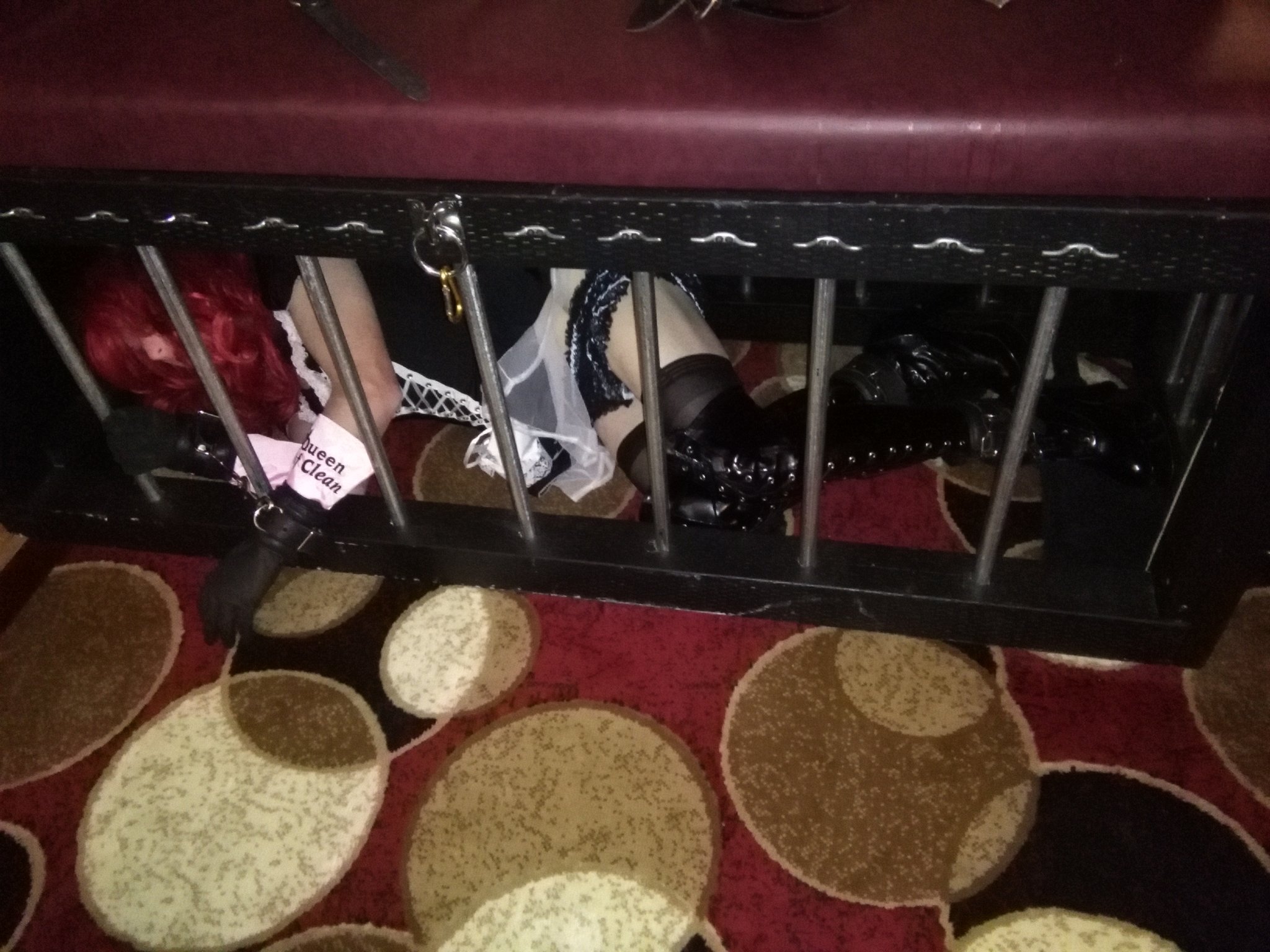I have been receiving some odd (sex slave) requests on my intake form, from those who come from outside of Canada. It wouldn’t be an issue if they bothered to read my website, but who actually does that, right? You see, here in Canada, we do things differently. We throw around the words Domme, Femdom, Mistress and Dominatrix, interchangeably, while across the pond, a Dominatrix is someone who offers sex and Pro domme doesn’t. It’s no surprise that Canadians do this. After all, we are a metric country who posts everything in lbs and I’ve never met a carpenter who measures in cm. It’s more of an indicator of whether the dominant charges, not whether she offers sex. Our “Dominatrix” neighbours, in the United States, also state that no sex is involved, in most cases. While we have those who do both, a “Fetish Friendly” Escort is usually the go to for light bdsm and full service, in these parts. With bdsm being virtually mainstream, most escorts offer some for of domination and fetish play.
Personally, I don’t like labels and none of those feel like a great fit. Sometimes I’m a corrupter of souls and other times I’m a perverted amusement park operator, but all of those things are a genuine expression of myself, that I can’t share with the vanilla world. So…if you want to make me smile, you can call me “beloved oppressor”.
According to Wikipedia…
The term dominatrix is mostly used to describe a female professional dominant (or “pro-domme”) who is paid to engage in BDSM play with a submissive. Professional dominatrices are not prostitutes, despite the sensual and erotic interactions they have.[22] An appointment or roleplay is referred to as a “session”, and is often conducted in a dedicated professional play space which has been set up with specialist equipment, known as a “dungeon”.[23] Sessions may also be conducted remotely by letter or telephone, or in the contemporary era of technological connectivity by email, online chat or platforms such as OnlyFans. Most, but not all, clients of female professional dominants are men. Male professional dominants also exist, catering predominantly to the gay male market.
Women who engage in female domination typically promote and title themselves under the terms “dominatrix”, “mistress”, “lady”, “madame”, “herrin” (German for “mistress”) or “goddess”. In a study of German dominatrices, Andrew Wilson said that the trend for dominatrices choosing names aimed at creating and maintaining an atmosphere in which class, femininity and mystery are key elements of their self-constructed identity.[24]
Some professional dominatrices set minimum age limits for their clients. Popular requests from clients are for dungeon play including bondage, spanking and cock and ball torture, or for medical play using hoods, gas masks and urethral sounding.[25] Verbal erotic humiliation, such as small penis humiliation, is also popular.[26] There are some professional dominatrices that engage in sexual contact activities such as facesitting, handjobs or fellatio but others disapprove of this.[27] Other BDSM activities can include various forms of body worship, vagina worship, ass worship, foot worship; tease and denial; corporal punishment including breast torture, caning, whipping; orgasm denial; and as well as face slapping, hair pulling, dripping hot wax on the genitals, spitting, golden showers, “forced” chastity, cock and ball torture, and pussy torture.[citation needed]
It is not unusual for a dominatrix to consider her profession different from that of an escort and not perform tie and tease or “happy endings“. Typically professional dominatrices do not have sexual intercourse with their clients, do not become naked with their clients[25] and do not allow their clients to touch them.[28] The Canadian dominatrix Terri-Jean Bedford, who was one of three women who initiated an application in the Ontario Superior Court seeking invalidation of Canada’s laws regarding brothels, sought to differentiate for clarity her occupation as a dominatrix rather than a prostitute to the media, due to frequent misunderstanding and conflation by the public of the two terms.[29]
That being said, it is now generally accepted that a professional dominatrix is a sex worker, and many of the acts conducted during a session may be interpreted as equally sexual to the participants.[30][31][32][33]
While dominatrices come from many different backgrounds, it has been shown that a considerable number are well-educated. Research into US dominatrices published in 2012 indicated that 39% of the sample studied had received some sort of graduate training.[34]
A 1985 study suggested that about 30 percent of participants in BDSM subculture were female.[35] A 1994 report indicated that around a quarter of the women who took part in BDSM subculture did so professionally.[36] In a 1995 study of Internet discussion group messages, the preference for the dominant-initiator role was expressed by 11% of messages by heterosexual women, compared to 71% of messages by heterosexual men.[37]
Professional dominatrices can be seen advertising their services online and in print publications which carry erotic services advertising, such as contact magazines and fetish magazines that specialise in female domination.[38] The precise number of women actively offering professional domination services is unknown. Most professional dominatrices practice in large metropolitan cities such as New York, Los Angeles, and London, with as many as 200 women working as dominatrices in Los Angeles.[39]
Professional dominatrices may take pride or differentiation in their psychological insight into their clients’ fetishes and desires, as well as their technical ability to perform complex BDSM practices, such as Japanese shibari, head-scissoring,[40] and other forms of bondage, suspension, torture roleplay, and corporal punishment, and other such practices which require a high degree of knowledge and competency to safely oversee. From a sociological point of view, Danielle Lindemann has stated the “embattled purity regime” in which many pro-dommes emphasise their specialist knowledge and professional skills, while distancing themselves from economic criteria for success, in a way which is comparable to avant-garde artists.[41]
Some dominatrices practice financial domination, or findom, a fetish in which a submissive is aroused by sending money or gifts to a dominatrix at her instruction. In some cases the dominatrix is given control of the submissive’s finances or a “blackmail” scenario is acted out. In the majority of cases the dominatrix and the submissive do not physically meet. The interactions are typically performed using the Internet, which is also where such services are advertised. Findom was originally a niche service that a traditional dominatrix would offer, but it has become popular with less-experienced online practitioners.[42]
To differentiate women who identify as a dominatrix but do not offer paid services, non-professional dominants are occasionally referred to as a “lifestyle” dominatrix or Mistress. The term “lifestyle” to signify BDSM is occasionally a contention topic in the BDSM community and that some dominatrices may dislike the term. Some professional dominatrices are also “lifestyle” dominatrices—i.e., in addition to paid sessions with submissive clients they engage in unpaid recreational sessions or may incorporate power exchange within their own private lives and relationships.[43] However, the term has fallen out of general usage with respect to women who are dominant in their private relationships, and has taken on more and more the connotation of “professional”. Nathalie Lugand in her 2023 book “A Psychodynamic Approach to Female Domination in BDSM Relationships” describes this strict separation as artificial.
Places like Urban Dictionary have a few conflicting definitions


